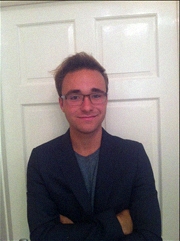Tutor HuntResources English Resources
The Great Gatsby; Fitzgerald`s Masterfully Crafted Settings And Their Implications.
A short essay detailing the way in which F. Scott Fitzgerald so intricately shaped setting in his greatest work.
Date : 06/11/2013
Author Information

Uploaded by : Daniel
Uploaded on : 06/11/2013
Subject : English
Nick's disbelief at the poor little garage that Wilson owns is palpable, "I assumed there must be some lavish apartment upstairs" states Nick, surely that cannot be all this man owns! Nick's belief is representative of a larger quality of every upper class character n the book - All eggers posses an inherent supercilious nature when around in the valley of ashes. This is exemplified by Tom's toying with Wilson over car sales, sleeping with his wife, and no more than when Daisy runs over Myrtle without even stopping. This higher opinion of themselves is what makes so many characters so unlikeable in the novel, and the setting of the valley is where this superiority is expressed (Tom's physical superiority is also demonstrated against Myrtle when he hits her). The Valley of ashes is of course used to communicate many ideas about America in the twenties, perhaps more so than any other setting in the novel. The roaring twenties were a boom time for the American economy but the valley works to show that this rapid industrialisation wasn't beneficial for all. The discarded ashes form "grotesque gardens" and "fantastic farms", an allusion to the former agrarian nation that was envisioned by the early settlers, a Jeffersonian idealism that is dwelled upon later on in the novel too, when Nick wonders about the Dutch settlers sighting this "huge new continent". The irony here is that these farms are formed from the literal waste of the new industry, a resonating image of the ways in which America was changing so rapidly in the twenties. Of course those living in this ashen land are those discarded from the boom time in America. The main street even has a shop for rent, and Wilson's business seems to rely on a single car sale from Tom Buchanan - hardly the economic prosperity that the twenties are normally associated with. The wreck of the Ford car in Wilson's garage is a potent symbol in that the Ford car was one of the major images of the twenties and is now left discarded "covered in dust" in the corner of this desolate garage. Prosperity didn't reach everyone in the twenties and Fitzgerald highlights this inequality to convey themes about American wealth and her principles as a country, which Fitzgerald was publicly cynical of. The most memorable image from the Valley of Ashes is the eyes of Doctor TJ Eckleburg, his rimmed golden glasses looking down at the valley "with a persistent stare". Eckleburg can be interpreted many ways, one of which being as a symbol of, or a replacement for God. The idea of an advertisement taking the place of a Godlike figure is a highly cynical view of American consumerism in the twenties however is understandable given the huge rate of growth of consumer products; people literally worship the market. Fitzgerald could be implying this is a bad turn for the US; under the stare of this billboard lays the ashen remains of an overly capitalist America, and it is also where Myrtle's untimely car crash death occurs. Another interpretation could be that Eckleburg is indeed a symbol of God and morality, but with an emphasis on how only the poorest posses such a figure. Fitzgerald could have placed the billboard across the bay from the eggs, or in New York, but he chose to place this symbol here. When Tom Buchanan enters the valley of ashes he receives an "uneasy stare" from TJ Eckleburg as if he is being judged for his wrong doing, and it could be seen as a judgement on the higher class in the novel and their destructive ways, "retreating back into their money and carelessness". Whatever interpretation you take of Eckleburg he is undoubtedly one of the most prominent images in the novel, helping to convey some of the novels most important commentary on the USA. Setting is used by Fitzgerald throughout to shape and reflect our opinions of characters, and help us to infer ideas about larger thematic and contextual issues. Fitzgerald's rather unique writing style ensures that the likes of Gatsby's party remain a dream like fašade, and the ashes remain a desolate wasteland, all too real in their ideas about America.
This resource was uploaded by: Daniel
